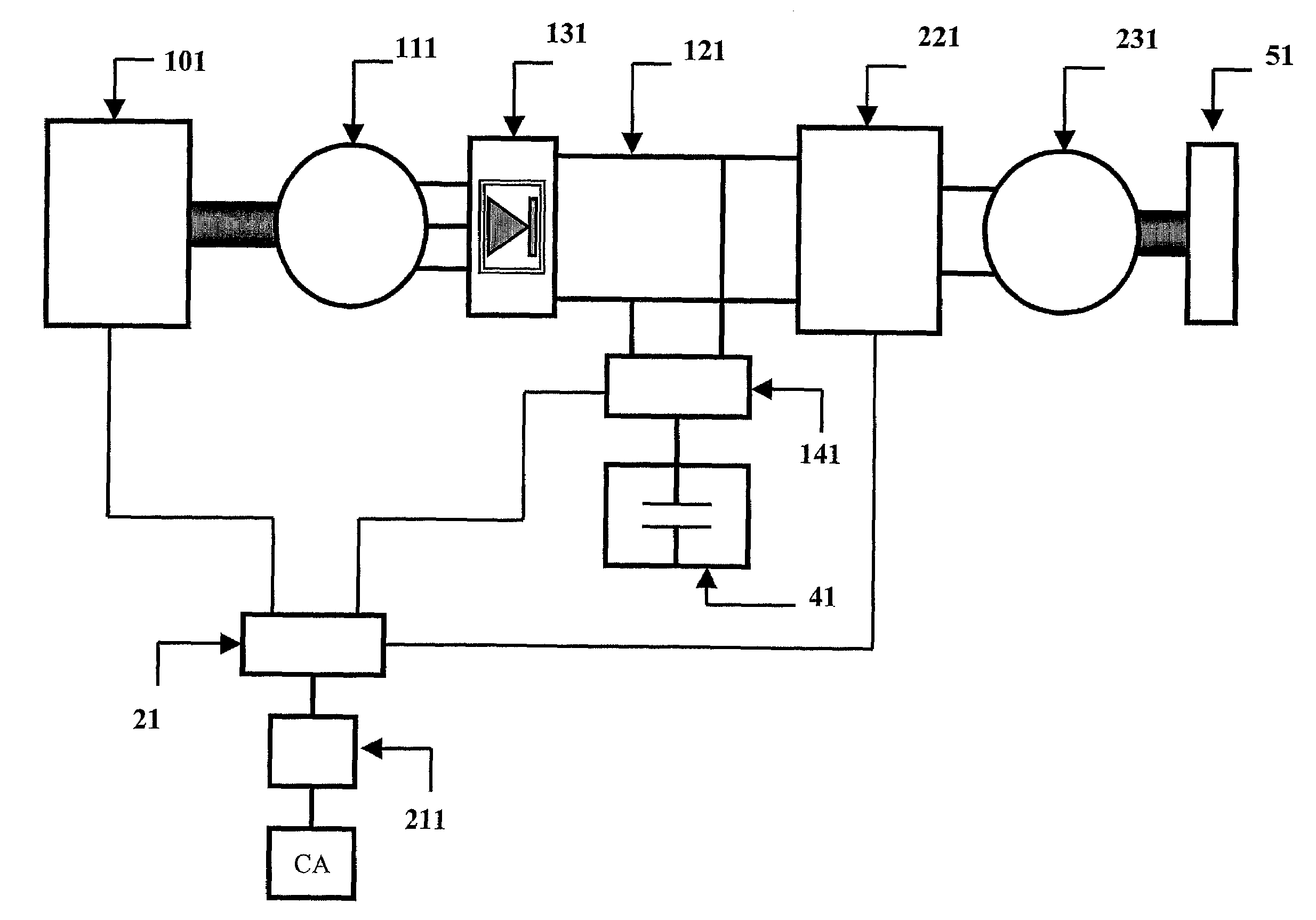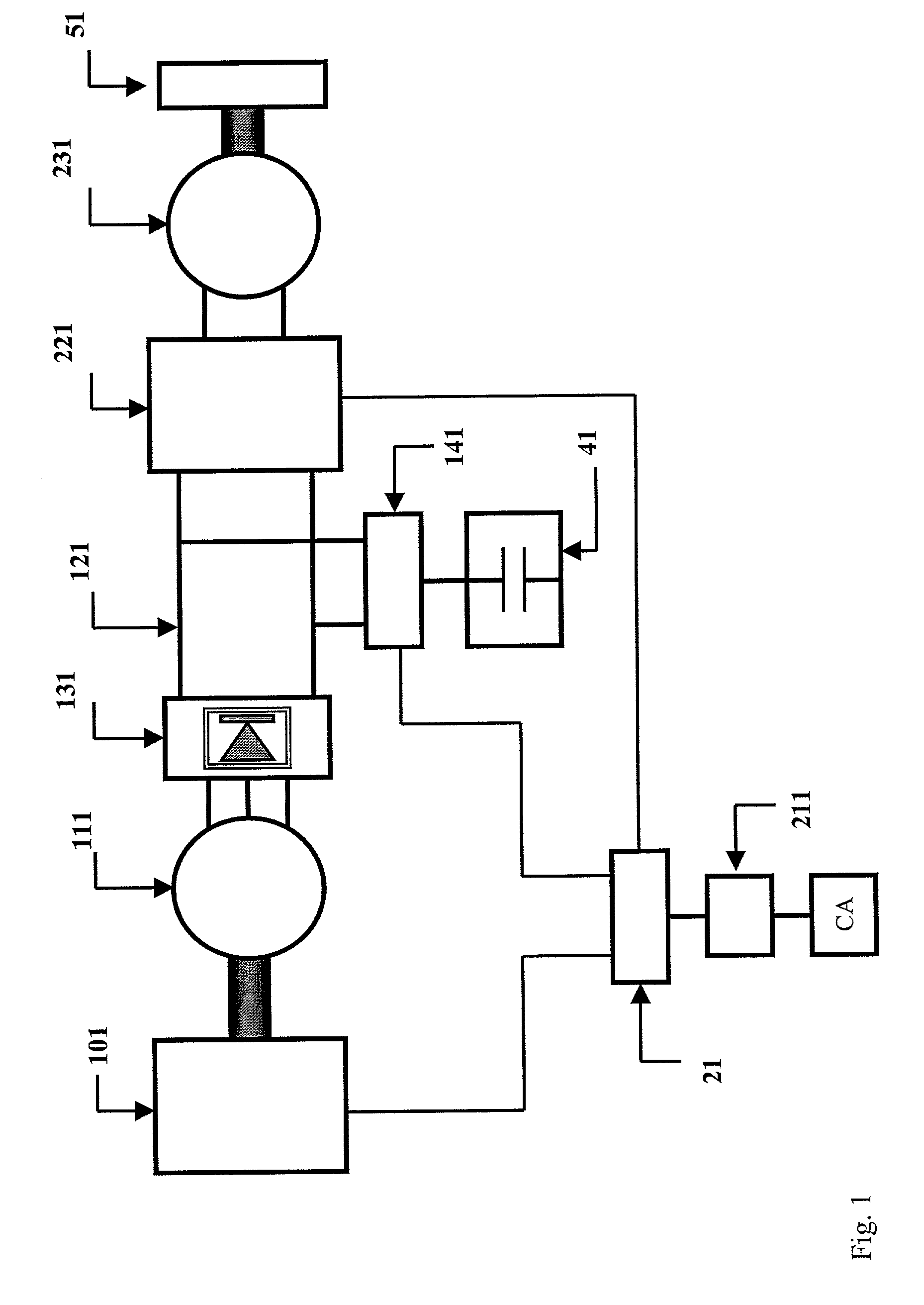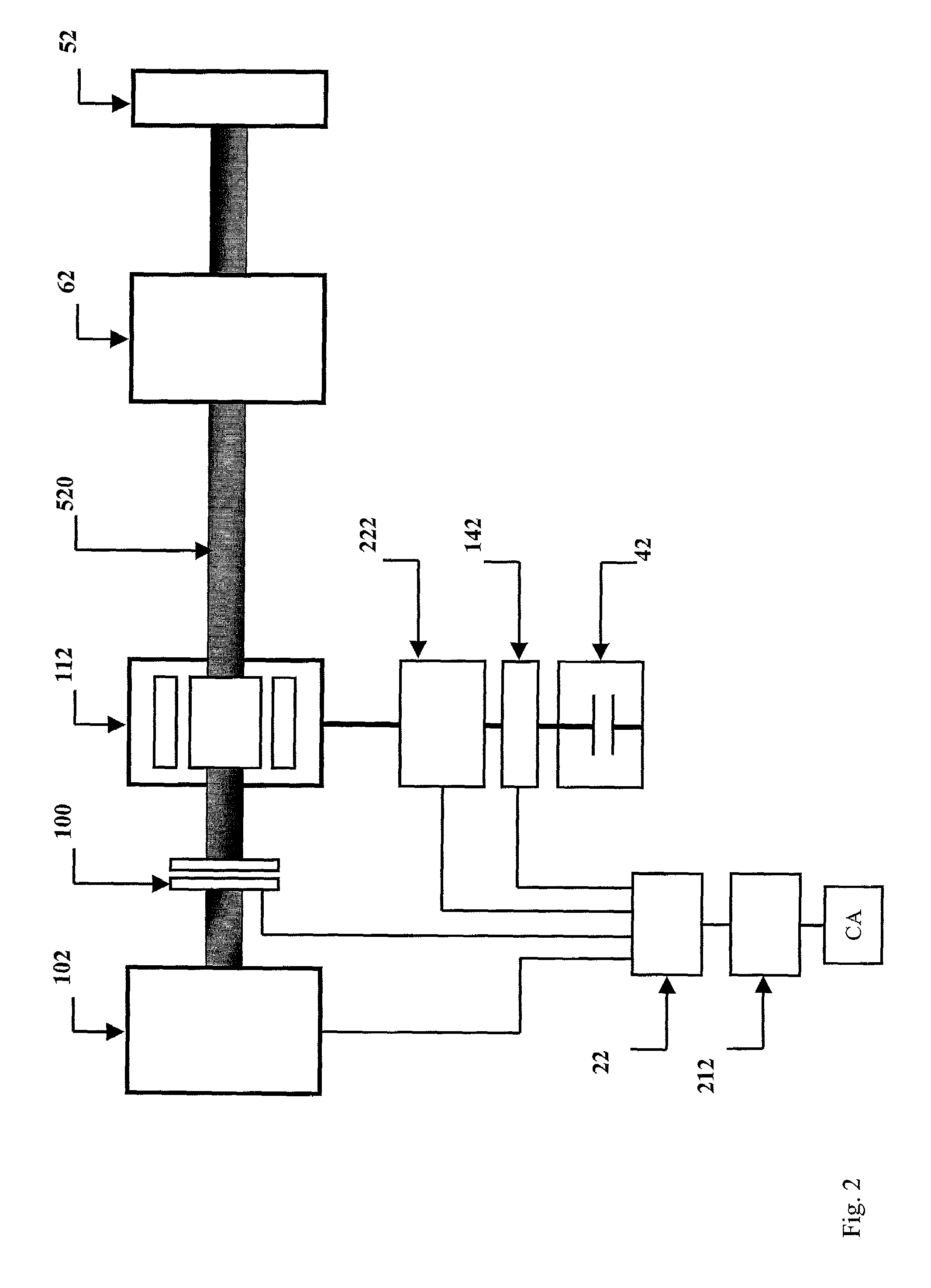Vehicle with a super-capacitor for recovery of energy on braking
a supercapacitor and braking technology, applied in the direction of motor/generator/converter stopper, vehicle sub-unit features, dynamo-electric converter control, etc., can solve the problems of increasing the mass of the device compared with the amount of electrical energy stored, presenting various problems, and increasing the mass of the vehicl
- Summary
- Abstract
- Description
- Claims
- Application Information
AI Technical Summary
Benefits of technology
Problems solved by technology
Method used
Image
Examples
Embodiment Construction
[0031]In FIG. 1, there can be seen an engine 101 driving an alternator 111. The electrical energy supplied by the latter feeds an electric traction motor 231, via a rectifier 131, an electric line 121, and an inverter 221. It should be mentioned, in passing, that in the case of a vehicle with a fuel cell, the electrical energy generating system replaces the elements 101, 111 and 131 of FIG. 1.
[0032]The electric traction motor 231 is mechanically coupled to a wheel 51. A super-capacitor 41 is connected to the electric line 121, by means of a device 141 for managing the operating mode. There are two operating modes: the energy “recovery” mode and the energy “restoration” mode. The assembly consisting of super-capacitor 41 and management device 141 is connected in parallel with the assembly consisting of electric traction motor 231 and inverter 221.
[0033]A unit 21 for controlling the torque applied to the vehicle wheel manages the circulation of the electrical energy in the drivetrain....
PUM
 Login to View More
Login to View More Abstract
Description
Claims
Application Information
 Login to View More
Login to View More - R&D
- Intellectual Property
- Life Sciences
- Materials
- Tech Scout
- Unparalleled Data Quality
- Higher Quality Content
- 60% Fewer Hallucinations
Browse by: Latest US Patents, China's latest patents, Technical Efficacy Thesaurus, Application Domain, Technology Topic, Popular Technical Reports.
© 2025 PatSnap. All rights reserved.Legal|Privacy policy|Modern Slavery Act Transparency Statement|Sitemap|About US| Contact US: help@patsnap.com



